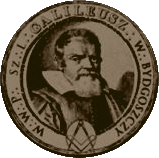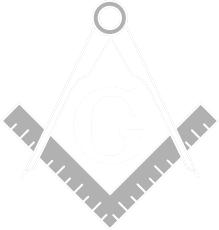
Of old freemason city Gdansk
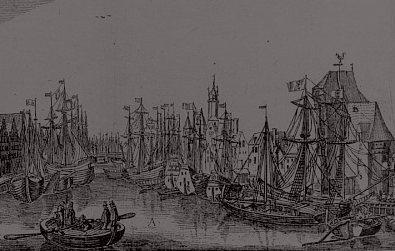 Gdansk (latine name Gedanum) is a city of old history. Archeological excavations prove that the city existed c.a. 650AD, but the first written mention can be found only in 999AD. Through its history Gdansk was a melting point for native Kashubian people, Poles, Germans and other nations like Jews, Scots and Dutch. The city was founded on kings law, which granted special rights, especially for burgesses. This founded a very stable basis for free thought, humanism and - freemasonry.
Gdansk (latine name Gedanum) is a city of old history. Archeological excavations prove that the city existed c.a. 650AD, but the first written mention can be found only in 999AD. Through its history Gdansk was a melting point for native Kashubian people, Poles, Germans and other nations like Jews, Scots and Dutch. The city was founded on kings law, which granted special rights, especially for burgesses. This founded a very stable basis for free thought, humanism and - freemasonry.
Gdansk was always a merchant city which build its wealth and prosperity. Its power grew notably during reign of king Stephan Bathory, who withdrew the Karnkowski Statutes (forced on city by Sigismund II Augustus). This allowed the outburst of free trade and caused a tremendous boost, evrn thoug Gdansk had to pay 200.000 guldens as a contribution.
Before the eve of Freemasonry. 17th Century.
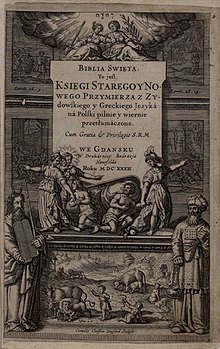 Freemason - or to be precise: free thought history in Gdansk reaches the beginning of 17th Century. In 1603 a very important person for science, culture and religious research has appeared in the city. His name was Andreas Hünefeld. He was a printer, known for edition of first Polish translation of the Bible (so called Gdansk Bible). Its worth mentioning that he was also a publisher of Johannes Hevelius works, including famous lunar research "Selenographia sive lunae descriptio...". In 1615 Hünefeld published a fundamental Rosicrucian book Fama Fraternitatis, which has a great impact on order's profile.
Freemason - or to be precise: free thought history in Gdansk reaches the beginning of 17th Century. In 1603 a very important person for science, culture and religious research has appeared in the city. His name was Andreas Hünefeld. He was a printer, known for edition of first Polish translation of the Bible (so called Gdansk Bible). Its worth mentioning that he was also a publisher of Johannes Hevelius works, including famous lunar research "Selenographia sive lunae descriptio...". In 1615 Hünefeld published a fundamental Rosicrucian book Fama Fraternitatis, which has a great impact on order's profile.
Hünefeld activities lead to the appearance of Rosicrucianism in Gdansk in form of a lodge Antilia. In 1726 another similar organisation was installed (Brotherhood of a Green Palm). The Order of Rosy Cross is present in Gdansk to this days as Lectorium Rosicrucianum.
The name of the ne of the first representatives of esoterism and freemasonry belongs to Theodore Ludwik Gralath, author of "Gedanken denn verschiedenen Arten des Taues" ("Thoughs on various meanings of a letter Tau"). In the book, Gralath tried to prove the omnipotence of greek letter Tau in nature. This theory had some impact on local freemasonry, but then was forgotten, being too spiritual for the rational days of Enlightment.
Another person worth noticing was a freemason, baron Christoph Heinrich Schröder. He was organised a masonic meetings in the first years of 18th Century, which resulted in the installation of a full lodge known by the name Aux Trois Niveaux.
Freemasonry in Gdansk in 18th and 19th Centuries
In years 1755-1759, Gdansk witnessed the activities of secret society known as Vereinigte Gesellschaft zur Übung der schönen Wissenschaften in Danzig. Being not a strictly freemason movement, it can be recognised as paramasonic order, closely related to values of the Craft. It stimulated its members for self-development, especially by means of reading and theatre activities.
The regular freemasonry in Gdansk is linked to the oldprussian lodges. Most of them worked in Scottish Rite and obliged their members to express faith in the Great Architect. However, all christian confessions (catholic or protestant) were warmly invited in lodges, according to open attitude and traditional tolerance of Gdansk (which cannot be strange in hanseatic city). Due to strong relation to Prussia, most important local lodges were started by the Grand Lodge in Berlin and Provincional Grand Lodge in Koenigsberg. Please note, that in the number of Freemasons, Gdansk was second only to Warsaw in all Polish-Lithuanian Commonwealth! In the city there were no less than 40 lodges and approximately 5% of population had links to freemasonry!
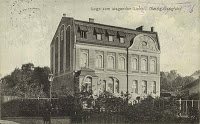 In mid 18th Century, the government of Gdansk started to feel threatened by the outburst of freemasonry. As a consequence, freemasonry was banned in 1763, which caused some lodges to be ceased. This policy echoed throught Europe. Many letters and protest were issued. After a few years, lodges returned to work. The oldest and most prominent lodge Under the Three Plumbs reemerged under a new name "Eugenia zum gekrönten löwen".
In mid 18th Century, the government of Gdansk started to feel threatened by the outburst of freemasonry. As a consequence, freemasonry was banned in 1763, which caused some lodges to be ceased. This policy echoed throught Europe. Many letters and protest were issued. After a few years, lodges returned to work. The oldest and most prominent lodge Under the Three Plumbs reemerged under a new name "Eugenia zum gekrönten löwen".
Freemasonry in Gdansk, 20th Century
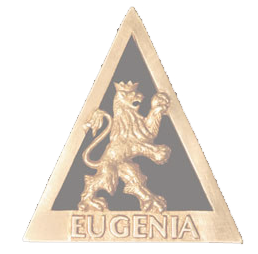 During World War I, some brothers from a few lodges have created a new entity, the Lodge of Sun od Peace. After the Treaty of Versailles, Gdansk became a free city, under some supervision of Poland (but it was Germany, which had a real power). In 1921 from Fides Lodge emerged a lodge of higer ranks under the name In Domino Spes. After Nazi takeover of the city (mid 30's) the freemasonry in Gdansk ceased, due to Hitler's regime restriction of free thought. Most buildings were sold (one of them was bought by Technica School, which now is known as Technical University of Gdansk). The very last meeting of the Eugenia zum gekrönten löwen had place 11th of April, 1935.
During World War I, some brothers from a few lodges have created a new entity, the Lodge of Sun od Peace. After the Treaty of Versailles, Gdansk became a free city, under some supervision of Poland (but it was Germany, which had a real power). In 1921 from Fides Lodge emerged a lodge of higer ranks under the name In Domino Spes. After Nazi takeover of the city (mid 30's) the freemasonry in Gdansk ceased, due to Hitler's regime restriction of free thought. Most buildings were sold (one of them was bought by Technica School, which now is known as Technical University of Gdansk). The very last meeting of the Eugenia zum gekrönten löwen had place 11th of April, 1935.
During World War II Gdansk was almost completly destroyed (especially in the Old Town section). Most freemason buildings were not reconstructed, probably due to communist attitude to the Craft. Poland fell into Soviet Union area of domination. The Long Night has started and freemasonry left Gdansk for a half of Century.
Today's City Magistrate stands over the old lodge location. It is worth mentioning that there was a Freemason Street in Gdansk, but nowadays it lost its status (now serves as a parking place) and name.
The beginning of reneissance of freemasonry in Gdansk
After Communism Fall in 1989, some hope for freemasonry appeared. However, first Polish lodges, liberal and regular were installed in Warsaw. In 2013, the masonic triangle under the names Johannes and Eva Hevelius has officialy started to work (after the first try, the Unity Triangle did not meet success). Apart from Hevelius (Grand Orient of Poland), there is also a regular lodge Eugenia (Grand National Lodge of Poland).

